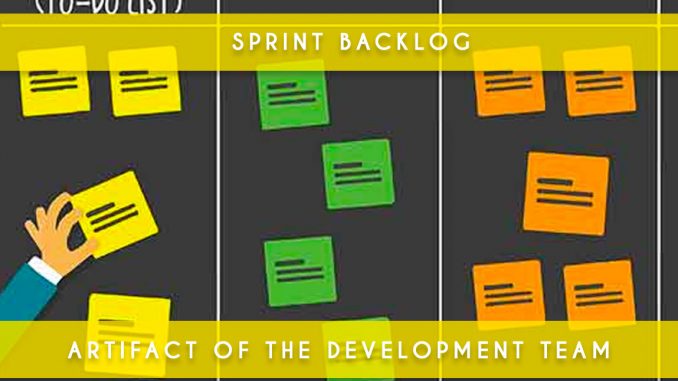
The sprint backlog is composed of items that were chosen at the beginning of the sprint, aimed at achieving the sprint objective during the sprint’s duration.
Understanding the Sprint Backlog
As explained earlier, the sprint backlog consists of items selected by the team during sprint planning, with the goal of:
- Addressing the sprint goal
- Incrementally enhancing the product with:
- New functionalities
- Requirements
- Additional features
- Bug fixes
- Enhancements
- Planning the delivery of the selected items (technical tasks, prioritization, etc.)
It’s crucial to note that some teams forget to outline a plan for delivering all the items in the backlog.
The development team generates a fresh sprint backlog with each sprint. The product owner, in fact, is not responsible for or the owner of it.
Flexibility of the Defined Scope
The sprint backlog maintains a “forecast” status, meaning the development team cannot be penalized if its content is not delivered in a stable state by the sprint’s end.
If the development team is unable to meet the sprint goal, the sprint review provides an opportunity to analyze the underlying reasons.
Key Characteristics to Understand
Continuous Improvement of Sprint Backlog
Each new sprint backlog should incorporate one of the improvement areas identified during the previous retrospective. This inclusion is vital to ensure ongoing enhancement.
Variable Scope of Sprint Backlog
While the sprint backlog is established at the beginning of the sprint, it evolves throughout its duration. Teams can introduce, modify, or remove items based on their ongoing findings.
Furthermore, the plan associated with it can also change as the sprint progresses, accommodating the development team’s latest discoveries.
Here are some possible additions:
- New technical sub-tasks (for an item)
- Spike for exploration purposes
- Uncovered test cases (functional/technical)
- …
This content variation and plan adjustment must always align with the sprint goal.
Updating Remaining Work Estimates
The Scrum Guide emphasizes the importance of regularly updating the remaining work estimates for each item as the development team progresses (even if the work is incomplete).
An Artifact Enhancing Transparency and Real-Time Monitoring
Though Scrum doesn’t specify the nature of transparency, the sprint backlog must be accessible to all. The development team is responsible for maintaining and updating it in real-time; this real-time management enhances transparency regarding team activities.
The development team should calculate the remaining work at least once a day (possibly during the daily sprint) to gain a clear understanding of the remaining path toward achieving the sprint goal.
In conclusion, Scrum teams commonly utilize a burndown chart to facilitate this process.




Be the first to comment